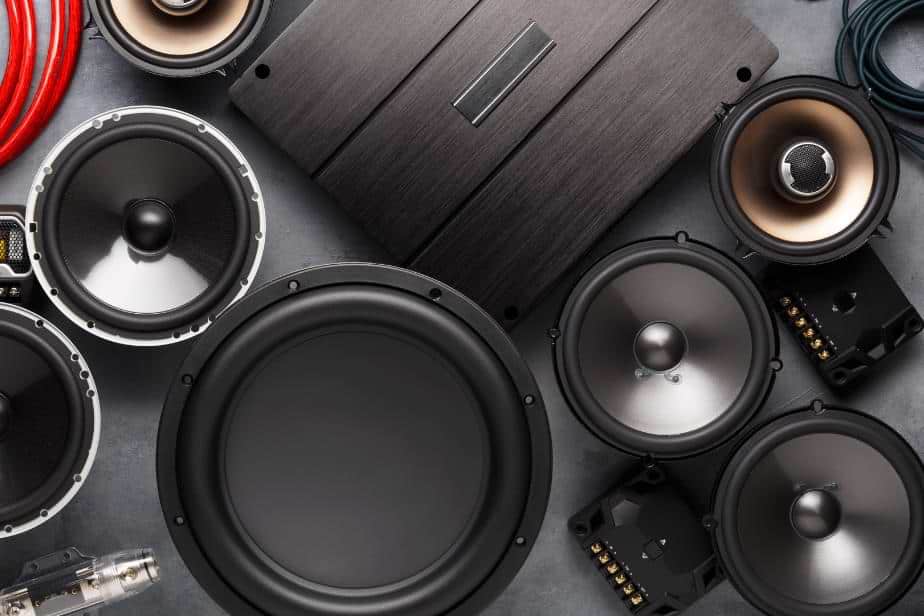When revamping the audio system in your vehicle, one pervasive question often arises: can you mix speaker brands in a car? The short answer to this question is a resounding yes. However, the intricacies of sound engineering, acoustics, and speaker compatibility warrant a more comprehensive exploration.
First, let’s delve into the fundamentals. Car speakers can significantly affect your listening experience. The clarity, depth, and overall richness of sound are greatly influenced not only by the speakers themselves but also by the head unit, amplifiers, and even the acoustics of the vehicle. Therefore, when contemplating a mix of speaker brands, one must consider several factors.
Understanding the Types of Speakers
Automobile audio systems generally incorporate different types of speakers, including coaxial, component, and subwoofers. Coaxial speakers, often referred to as full-range speakers, combine multiple audio frequencies into a single unit, making them convenient for factory replacements or budget setups. Component speakers, on the other hand, consist of separate elements, such as woofers and tweeters, enhancing sound quality and offering greater flexibility in sound staging. Subwoofers amplify the lower bass frequencies and are typically used in conjunction with either coaxial or component speakers to create a fuller sound.
Understanding these distinctions is critical when mixing different brands. Each manufacturer often designs their speakers with particular sonic signatures—that is, a unique flavor of sound reproduction. Thus, combining speakers that display vastly different sonic characteristics may result in a disjointed audio experience.
Impedance and Power Handling
An essential aspect of speaker compatibility is impedance, which is measured in ohms. Most car speakers have an impedance rating of 4 ohms or 6 ohms. If you plan to mix brands, ensure that the impedance ratings are compatible with your existing setup. Connecting speakers with significantly different impedance ratings can lead to power imbalances, causing distortion or, in worst-case scenarios, damaging the audio equipment.
Power handling is another critical factor. Each speaker has a maximum power rating—expressed in watts—that indicates how much power it can handle before risking damage. Mixing speakers where one set has higher or lower power ratings than the others could lead to one set dominating the sound, resulting in a less harmonious audio experience. Instead, try to match the power handling capabilities to create a balanced output.
Tuning the Audio System
When mixing speaker brands, tuning becomes paramount. This process involves adjusting frequency responses, levels, and crossovers to ensure that all the components work harmoniously. Equalization settings in your head unit or an external DSP (digital signal processor) can greatly enhance the listening experience and help mitigate the disparities between different speaker brands. A proper tuning session will help blend the unique characteristics of each brand, creating a more cohesive sound.
The Importance of Quality
When integrating various brands, it is advisable to prioritize quality over quantity. Investing in high-quality speakers, regardless of the brand, will generally yield a better audio experience. Just as one might not pair a luxury wine with subpar food, one should consider the overall quality of the components they are mixing. Lower-quality speakers may sound muddy or distorted when placed alongside superior models. Therefore, if mixing brands is on the table, it’s wise to select only reputable brands known for their audio fidelity.
Personal Preferences and Sound Signature
Sound is highly subjective; personal preference plays a significant role in your audio experience. What sounds good to one person may not resonate with another. When mixing speaker brands, one should trust their ears. Tweak and experiment with the sound settings until you achieve a pleasing balance of bass, mids, and highs. Listen to various music genres to evaluate how well the speakers perform under different conditions. This hands-on approach will help you better understand how each brand contributes to your overall audio quality.
Seamless Integration with Other Components
It is vital to ensure that your car’s other audio system components, such as amplifiers and head units, are compatible with the speakers you plan to mix. Some amplifiers may be optimized for specific speaker types or brands, affecting the fidelity and overall system performance. Always check if the amp’s power output aligns with the speakers’ requirements and whether the head unit includes features that can enhance your chosen combination of brands.
Consultation with Professionals
When in doubt, seeking advice from professionals or acoustics specialists is a prudent step. Their expertise can guide you on speaker compatibility, installation techniques, and tuning methods, ensuring that your car’s audio system reaches its full potential. Many retailers and audio boutiques offer consulting services tailored for car audio systems.
In Conclusion
Mixing speaker brands in a car is not only feasible but also a common practice among audio enthusiasts. While it presents unique challenges, understanding speaker types, impedance, power handling, and personal preferences can help you create a harmonious audio experience. Ultimately, the goal is to achieve a sound that resonates personally—one that transforms your daily commute into a delightful auditory journey. Embrace the exploration; the road ahead is yours to enjoy.
